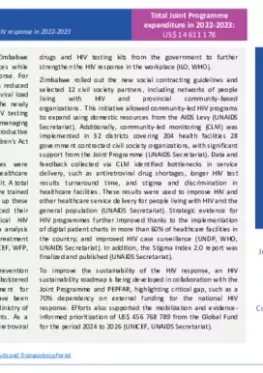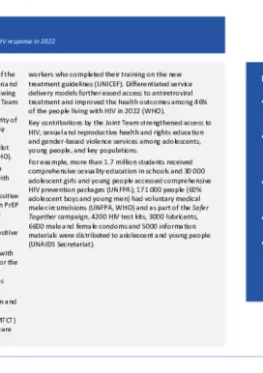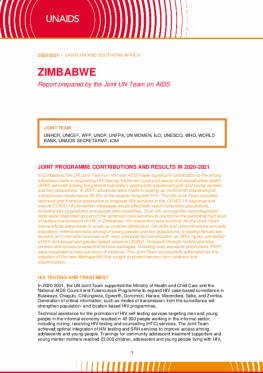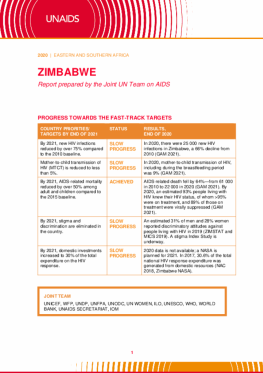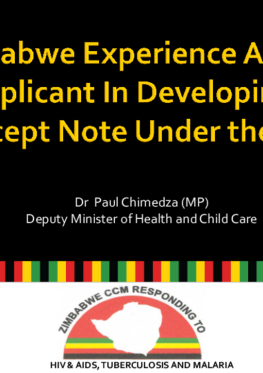|
Zimbabwe
In the 2022-2023 biennium, the Joint Programme in Zimbabwe made significant contributions in improving HIV services while strengthening strategic evidence for the national response. For example, integrating the sample transportation system reduced the turnaround time for HIV test results and expanded viral load testing services (UNICEF, UNDP, WHO). Additionally, the newly revised national standard operating procedures for HIV testing among children and adolescents provided guidance on managing age consent issues, improved access to sexual and reproductive health (SRH) for adolescents and alignment with the Children’s Act (UNFPA, WHO, UNAIDS Secretariat).
Integrated HIV, nutrition and immunization services were implemented in two target districts using a primary healthcare approach, ensuring access to these services in a single visit. A total of 95 healthcare providers and village health workers were trained and received outreach and campaign materials to scale up these services. Additionally, 70 healthcare providers enhanced their capacity to deliver services for eliminating vertical HIV transmission, paediatric HIV, adolescent SRH, and data analysis and utilization. This resulted in 100% HIV testing and treatment coverage among HIV-exposed infants in all regions (UNICEF, WFP, UNFPA, WHO, UNAIDS Secretariat).
Training of peer educators from 20 companies on HIV prevention and testing enhanced awareness in the workplace and bolstered the promotion of counselling, testing, and treatment for employees. Additionally, private sector companies have been supported in registering their health facilities with the Ministry of Health through public-private partnership arrangements. As a result, these companies now receive supplies such as antiretroviral drugs and HIV testing kits from the government to further strengthen the HIV response in the workplace (ILO, WHO).
Zimbabwe rolled out the new social contracting guidelines and selected 12 civil society partners, including networks of people living with HIV and provincial community-based organizations. This initiative allowed community-led HIV programs to expand using domestic resources from the AIDS Levy (UNAIDS Secretariat). Additionally, community-led monitoring (CLM) was implemented in 32 districts covering 204 health facilities 28 government contracted civil society organizations, with significant support from the Joint Programme (UNAIDS Secretariat). Data and feedback collected via CLM identified bottlenecks in service delivery, such as antiretroviral drug shortages, longer HIV test results turnaround time, and stigma and discrimination in healthcare facilities. These results were used to improve HIV and other healthcare service delivery for people living with HIV and the general population (UNAIDS Secretariat). Strategic evidence for HIV programmes further improved thanks to the implementation of digital patient charts in more than 60% of healthcare facilities in the country; and improved HIV case surveillance (UNDP, WHO, UNAIDS Secretariat). In addition, the Stigma Index 2.0 report was finalized and published (UNAIDS Secretariat).
To improve the sustainability of the HIV response, an HIV sustainability roadmap is being developed in collaboration with the Joint Programme and PEPFAR, highlighting critical gap, such as a 70% dependency on external funding for the national HIV response. Efforts also supported the mobilization and evidence-informed prioritization of US$ 456 768 789 from the Global Fund for the period 2024 to 2026 (UNICEF, UNAIDS Secretariat).


